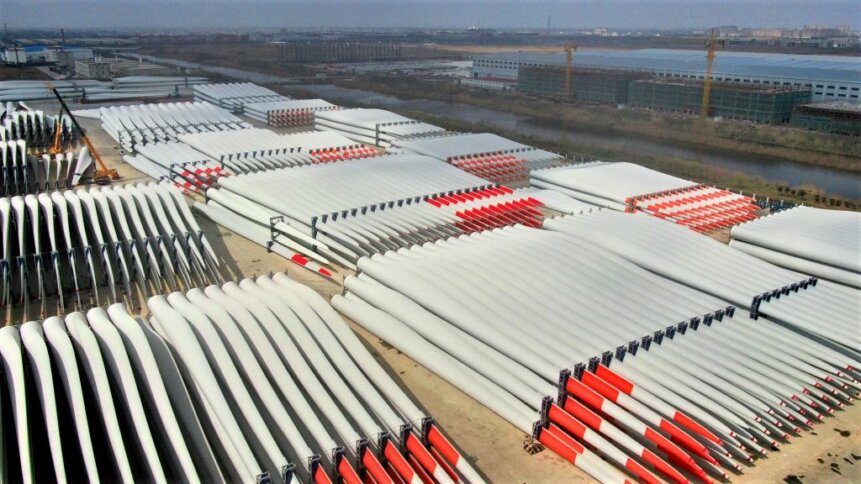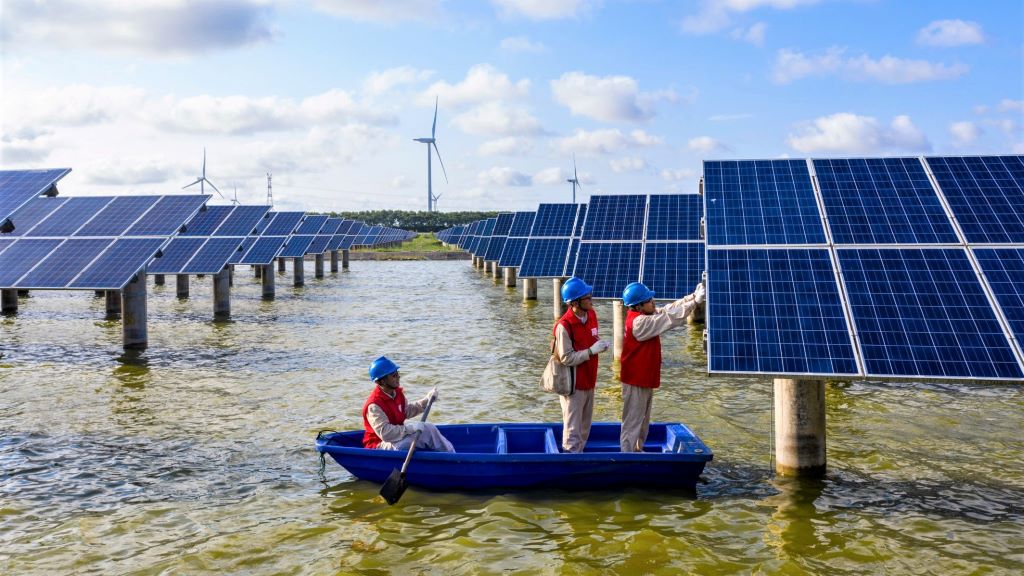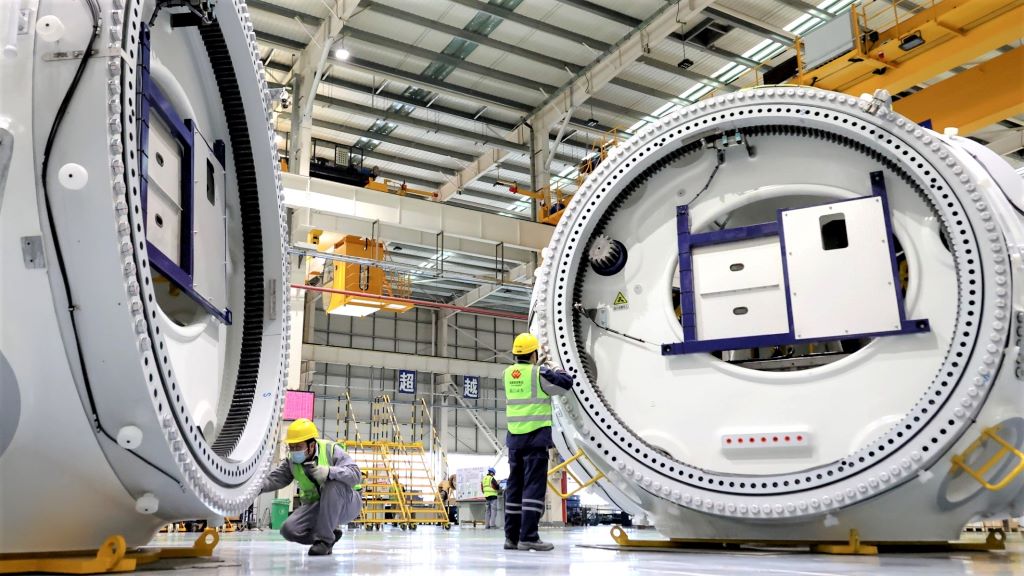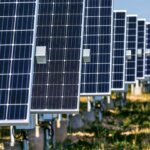China renewable energy calculations sum up carbon neutrality goal

|
Getting your Trinity Audio player ready...
|
How many commercial-scale PV and wind power plants will China need to achieve its carbon neutrality goal by 2060? According to a new study – ‘Accelerating the energy transition towards photovoltaic and wind in China’ – published this week in the journal Nature, the answer is 3,844. And the calculations, performed by experts in China, Japan, and Europe, put numbers to the renewable energy scale-up required.
China renewable energy facts
Today, China is already the global leader in wind and solar farm capacity. Figures collated by Global Energy Monitor – a non-profit on a mission to develop and share information in support of the worldwide movement for clean energy – show that China has well over double the installed wind capacity of the US.
And when it comes to active PV installations, Global Energy Monitor’s solar power tracker indicates that more than half of the world’s operating capacity is located in China. Combining wind and solar, China’s current renewable energy capacity is in excess of 500 GW, which may sound like a lot, but is still just a fraction of what’s required long term.
For example, the study’s authors forecast that – based on China’s 14th Five-Year Plan for a Modern Energy System – the country’s capacity for renewable energy generation will likely reach somewhere between 5 and 9.5 PWh per year. Whereas achieving carbon neutrality in China by 2060 will require scaling up renewable energy from wind and solar sources to as much as 15 PWh per year.
And this mismatch points to the need for much greater investment in PV and wind power in the country, from current levels of around US $77 billion to US $426 billion in the 2050s. Home to 18% of the world’s population, China’s share of global carbon dioxide emissions has risen to 28%.
But given the resources available, it’s feasible for the country to lead the way in the global clean energy transition – especially given its manufacturing expertise in producing PV panels and wind turbines.
China dominates the solar industry and has leadership across each stage of the manufacturing process, from the preparation of polysilicon ingots to wafer slicing, cell fabrication, and module assembly.
Top wind turbine manufacturers (onshore + offshore)
- Goldwind, China
- Vestas, Denmark
- GE Renewable Energy, US/France
- Envision, China
- Siemens Gemesa, Spain
- Mingyang, China
- Windey, China
- Nordex, Germany
- SANY, China
- CRRC Wind Power, China
[Source: BloombergNEF]
Ranking global wind turbine manufacturers, the majority of the top 10 firms are Chinese companies. And, subject to materials availability, these industrial strengths certainly put China and renewable energy on the same page – particularly in key categories of wind and solar, which experts see as being the most versatile solutions.
“Among renewables, PV and wind power have wider ranges of application than hydropower, generate less detrimental effects on food and ecosystems than bioenergy, and probably entail lower costs than carbon capture and storage,” write authors of the study published this week in the journal Nature.

Shipshape: workers check solar panels built on a fishing lake in China. Image credit: AFP.
The researchers considered a wide range of factors – resource limitations, administrative boundaries, land suitability, restriction of land use, ground slope, land cover, latitude, longitude, terrestrial and marine ecological conservation, water depth at offshore wind stations, shipping routes, solar irradiance, wind power density, and air temperature – to visualize the optimum renewable energy mix in China.
And, according to the group, the ideal combination of utility-scale facilities (> 10 MW capacity) corresponds to 2,767 solar farms, and 1077 wind plants, including 11 offshore developments.
Wind and solar are complementary, with solar peaking during the day and wind at night. And, over the longer term, in summer and winter, respectively.
Large-scale conversion to renewable energy has, in the past, raised fears of grid instability and high-energy storage cost due to the uncertainty of wind and solar. But simulations – this time considering scenarios for the continental US between 2050 and 2055 – reveal that grid reliability and 100% clean energy penetration are not incompatible.
“Solutions are obtained without higher-cost stationary battery storage by prioritizing storage of heat in soil and water; cold in water and ice; and electricity in phase-change materials, pumped hydro, hydropower, and hydrogen,” wrote Mark Jacobson of the University of California, Berkeley, US, in a 2015 study.
Agrivoltaic trend
In terms of land use, deserts, grasslands, and oceans should provide most of the space for renewable energy expansion in China. On TechHQ we’ve written previously about how solar, animal farming, and crops can co-exist – a field dubbed agrivoltaics. For example, solar panels can provide shade for animals, while livestock contribute by keeping surrounding plants under control so that PVs receive maximum irradiation.
And there are examples already on China’s mainland, such as in Guizhou province (in the southwest of the country), where farmers harvest Sichuan peppers in fields shared with solar panels that offer shelter from the hot sun.

Large scale project: employees work on wind turbine hubs at a factory in Lianyungang, in China’s eastern Jiangsu province on February 28, 2023. Image credit: AFP.
Increased renewable energy capacity would give China greater energy security and some of the costs of development would be offset against savings from reduced fossil fuel purchases. However, modeling does assume investment in building ultra-high-voltage transmission lines to provide efficient energy distribution – boosting capacity and reducing electricity losses – across the vast territory.
Also, because facilities will be distributed widely across the country and not just concentrated in China’s richer regions, there’s potential for wind and solar infrastructure to play a role in increasing per-capita income from $29,000 to $34,400 in North China and from $29,100 to $30,600 in Northwest China – based on research estimates. Renewables can bring development to desert and marginal lands that otherwise have little in the way of revenue opportunities for residents.
Studies also point to the value of collecting geospatial data. Advances in satellite imaging are making it possible to position solar arrays in locations that offer the brightest prospects for clean energy generation.









